Tools of the Trade
Now that we’ve discussed finding an adequate work space, it’s time to talk about what kinds of tools you will need in order to properly work with stained glass.
I will admit, creating stained glass artwork is not only a time consuming craft but an expensive one for beginners to jump into. It’s mainly because of these two reasons that you don’t hear many people take it up as a hobby. However, in this list of tools and materials, I intend to include only the essentials so beginners know exactly what they’ll need in order to get into stained glass!
GLASS CUTTER
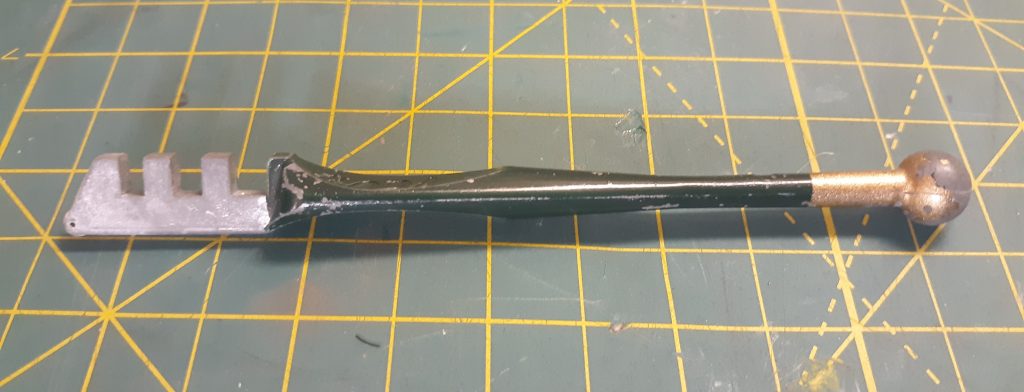
A glass cutter is one of the most important tools to have. As the name suggests, you’ll be using it in order to cut glass into specific shapes for your projects. The glass cutter I use is your standard, run of the mill carbide steel wheel cutter that you can easily find online and costs around $15.
SOLDERING IRON
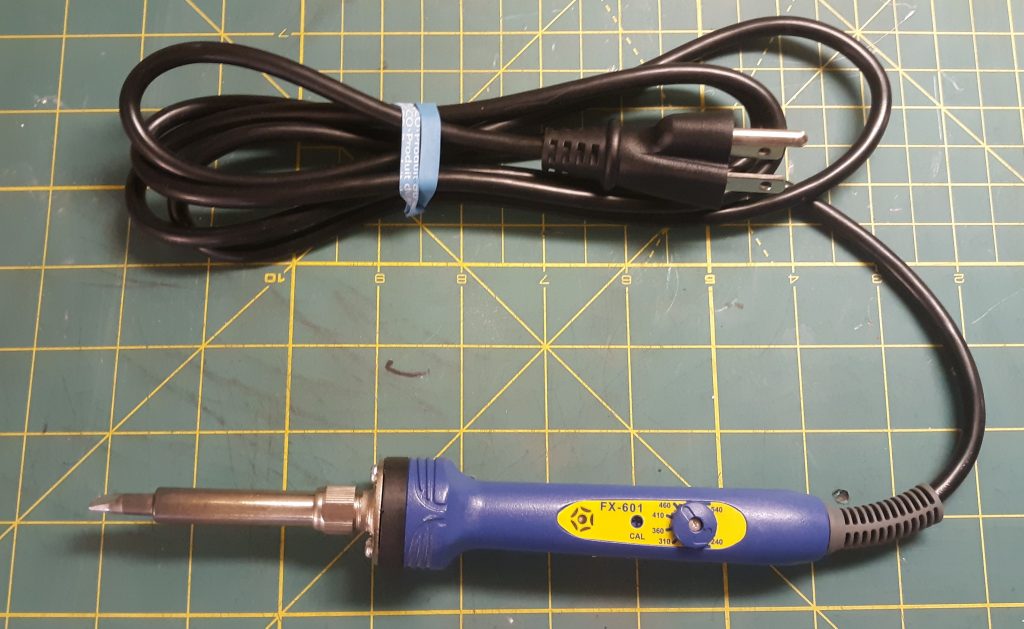
The soldering iron is used to melt led solder onto copper foil. You can find a variety of different irons with features like interchangeable tips to regulate temperatures. However, mine isn’t that fancy, since irons like that can cost a little more to buy. An approximate cost for a soldering iron can be between $10-$40.
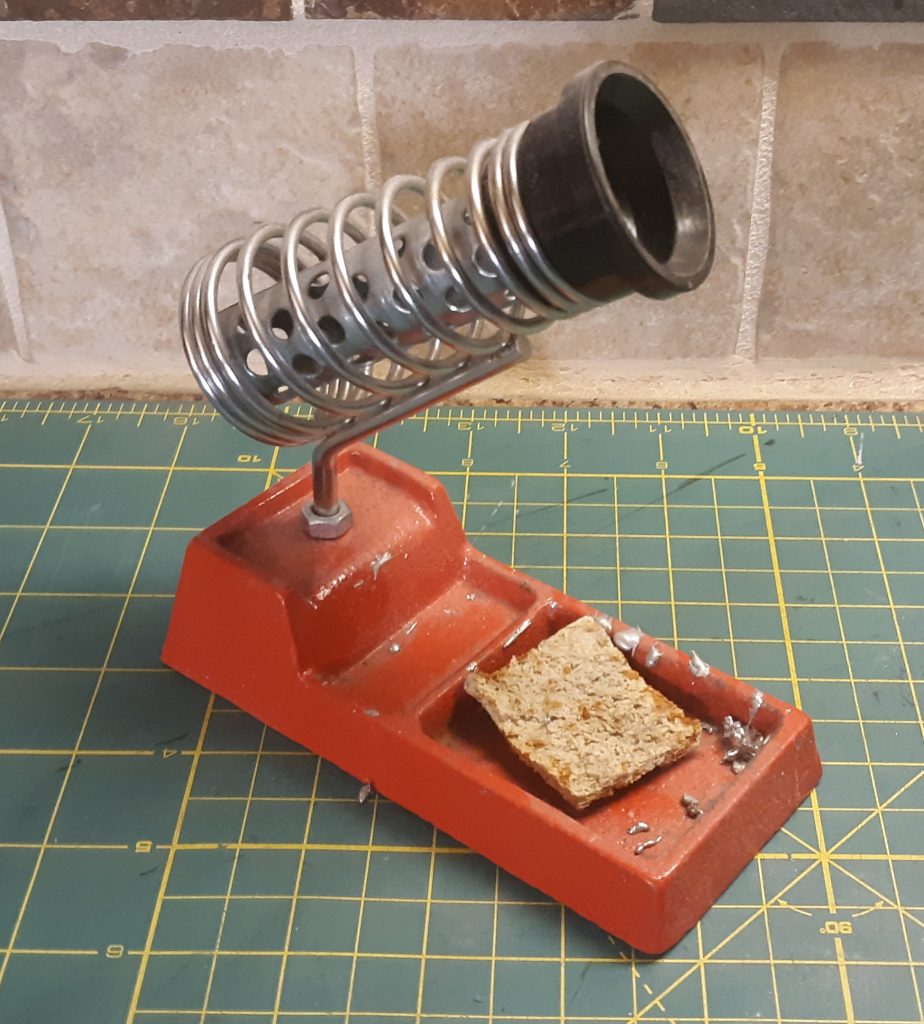
You’ll also need a stand for your soldering iron when it’s on and not being used. This will cost you an additional $10.
TIP CLEANER AND SOLDER
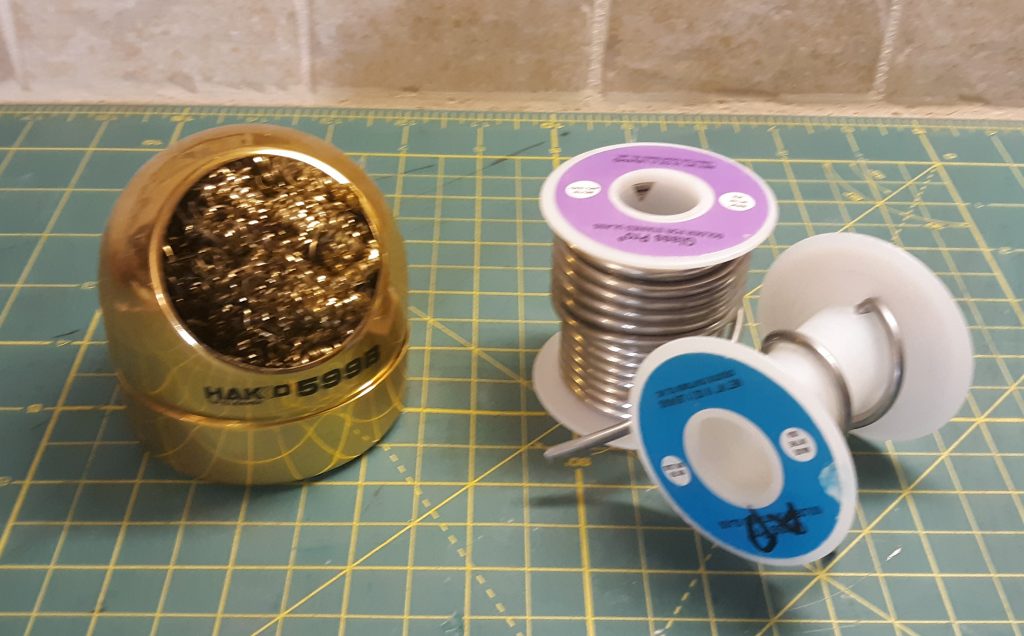
Solder is an alloy of tin and led that’s applied to pieces of copper foil or metal in order to bind them together. You’ll often find it sold in wrapped spools will cost $5 per 1-pound spool. A tip cleaner uses steel wool enclosed within a heat resistant casing to remove excess solder from your soldering iron. I was able to purchase mine online for around $10, but it’s an important tool for maintaining the life of your iron.
FIDS AND COPPER FOIL
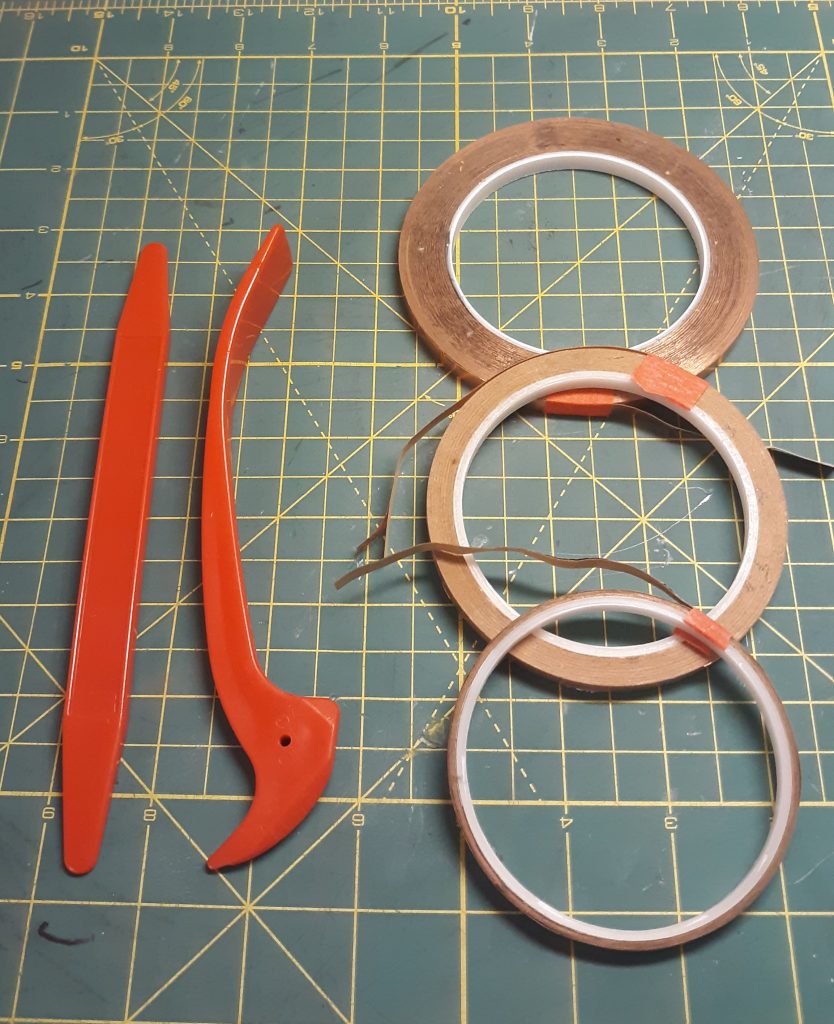
Fids are tools used to burnish or smooth out foil that’s been applied to grinded glass. Fids can come in a variety of different shapes and sizes. The fids shown here came from a set, but you can typically find fids sold individually for around $1 or $2. The copper foil provides a surface for melted solder to bond and is wrapped around ground pieces of glass. The standard widths for copper foil are 3/16 inch, 7/32 inch, and 1/4 inch; which you choose to purchase depends on the aesthetic nature of your project. A typical 36-yard roll of copper foil will cost $10.
CUTTING OIL, FLUX, GRINDER COOLANT AND FLUX REMOVER
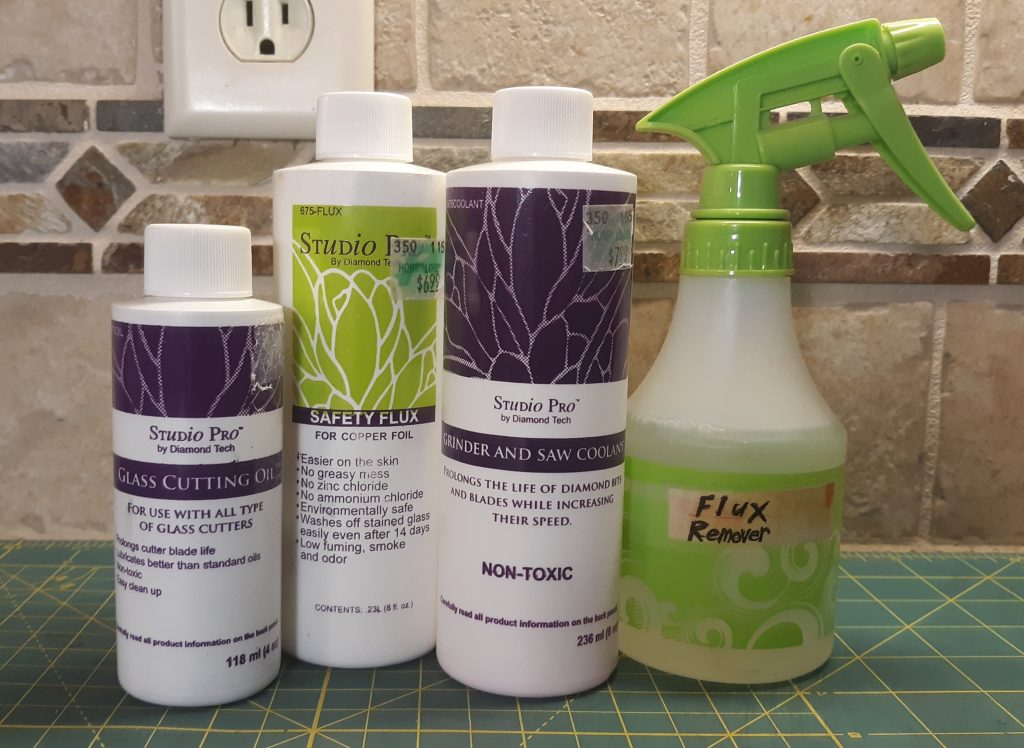
Each of these liquids are important for either creating your stained glass work or maintaining your tools and equipment. For starters, the cutting oil helps reduce friction between your glass cutter and the glass itself. The cutting oil will cost $5 per bottle. Grinder coolant is a liquid added to the water of your glass grinder which helps prolong the life of its diamond bits, and is about $8 a bottle. Flux is used to clean oxidation and other dirt from metal surfaces so that melted solder will properly adhere to a surface. A bottle of flux can cost anywhere from $5 to $15 a bottle. Flux remover is to help clean off flux from the finished piece and costs around $7-$14.
FIBER BOARD
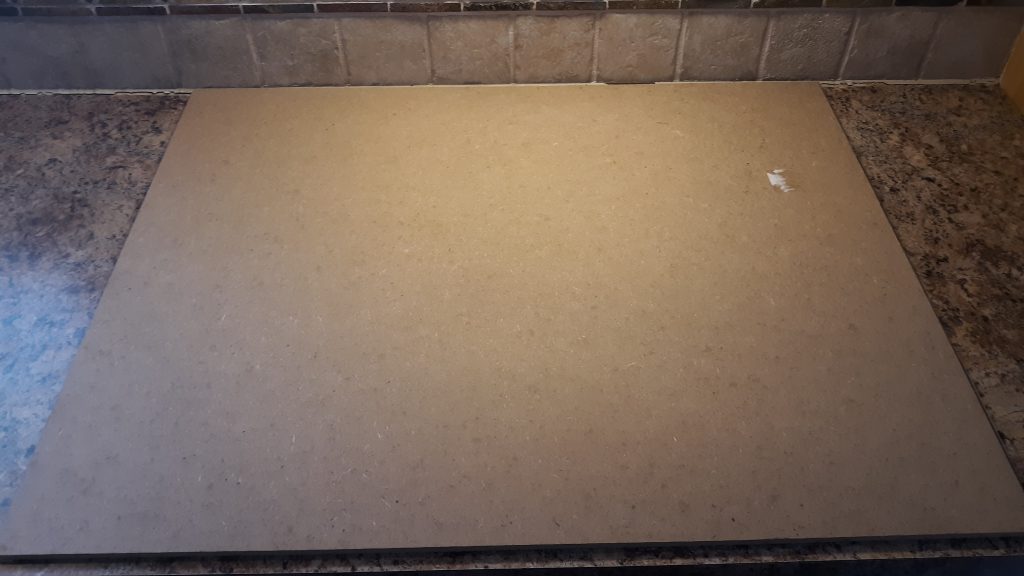
Like I said in my previous post, you’ll need a firm surface to work on. I prefer to use a fiber board as my work surface for stain glass because not only does it have a bit of give to it, but the board is fairly inexpensive. The board I use came from Home Depot and only cost me $7.
GLASS GRINDER
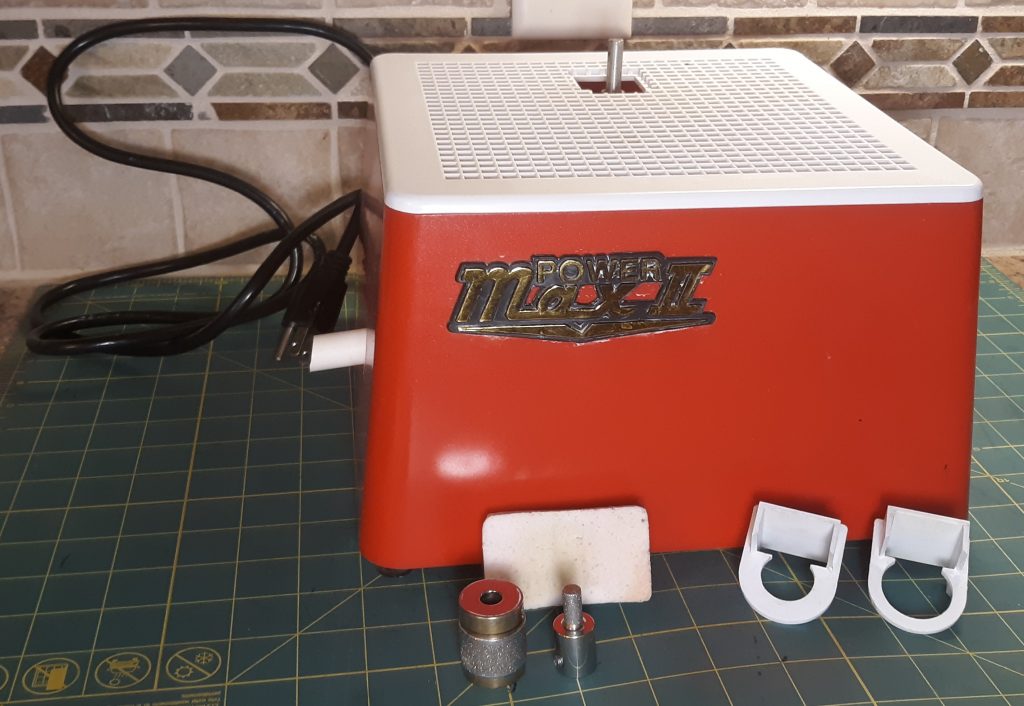
Now here’s the big ticket item: The glass grinder. It is an integral piece of equipment but an expensive one at that. These puppies can cost anywhere from $90 all the way up to $300! You’ll most likely have to order one online, but I was able to get mine from Michaels for $120.
SAFETY GOGGLES AND RAGS
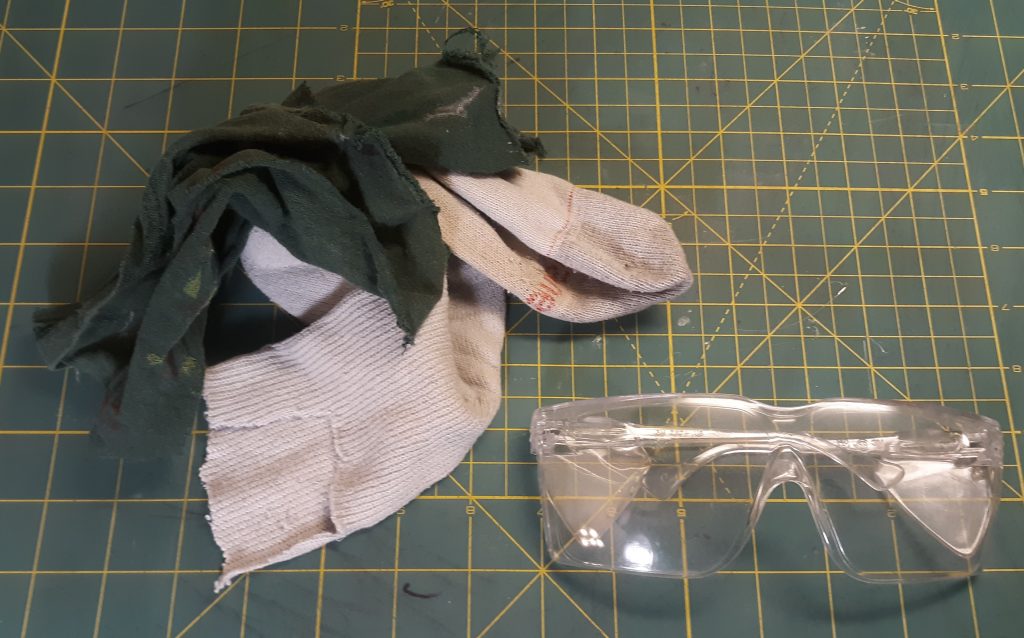
Since shards of glass can break off during the cutting and grinding process, it’s always important to protect your eyes using safety goggles, even if you wear glasses. A pair of safety goggles typically costs $2 or $3 a pair. As for rags, don’t bother spending any money. For our purposes, anything from an old t-shirt to a sock will work.
MESURING TOOLS
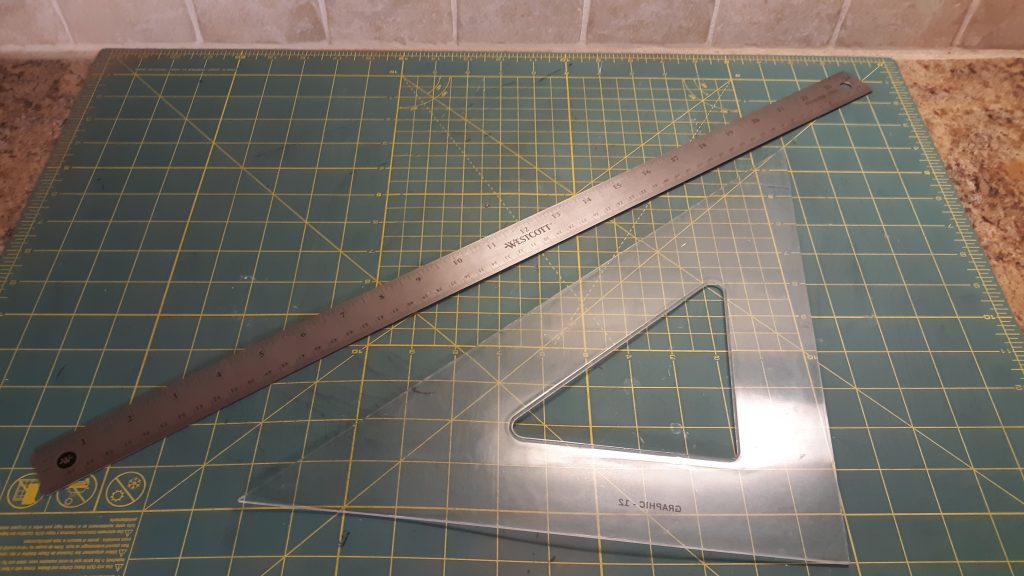
Tools such as a ruler or speed square are essential for drawing strait lines when marking out your glass. A 24 inch metal ruler can cost $8 to $13, and a speed square can cost $7 to $10.
SHARPIES, GLUE, SCISSORS, AND EXACTO KNIFE
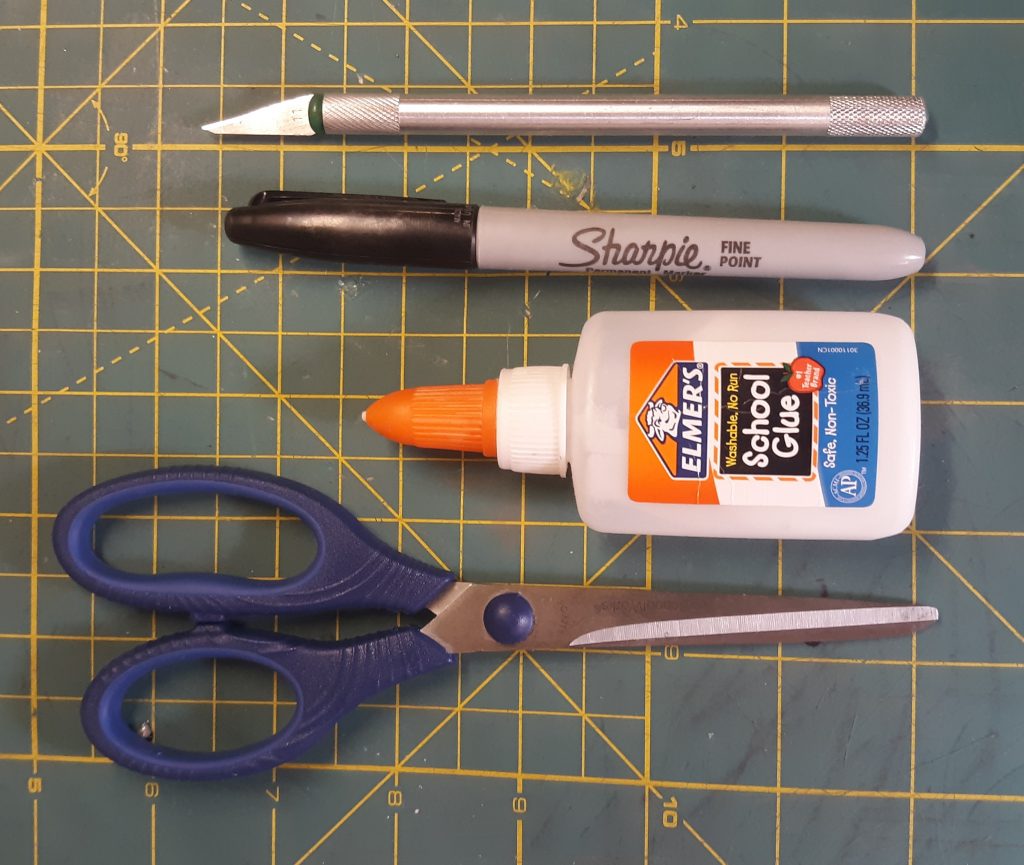
Last on are list of tools we have some common house hold items like scissors, glue, and a Sharpie marker. If you don’t currently have these items, you can easily find them at places like Walmart or Target. You’ll also want to buy an exacto knife for touching up areas on the coper foil, which costs about $2.
Yes, it’s a lot to buy in order to get started making stained glass artwork, but I grantee that if you’re still interested in perusing a hobby in stained glass after reading through this giant list, then the cost will be more than worth it in the end!
Filed under Uncategorized | Comment (1)Your Work Environment
I know a lot of you may be eager to jump right into working with stained glass, but the fist thing we should talk about before anything else is you’re work environment. It may seem a bit boring at first, but its important since this will be the area in which you create beautiful works of art.
A beginner doesn’t need to set up an elaborate workshop or studio to create stained glass artwork. Here are some important things to note when setting up your work space:
Glass cutting and other work should be done on a firm surface, such as a fiber or self-healing cutting board. The board itself should be placed on top of a sturdy surface, preferably in a low-trafficked area where sharp pieces of glass and chemicals wont pose a risk to others. Keep in mind when picking out a work area that you’ll need to have access to an electrical outlet for equipment, such as a soldering iron or electric glass grinder.
Don’t set up your work space in an entirely enclosed area. Since certain chemicals you’ll be using can be harmful to inhale, make sure your space has adequate ventilation.
Because glass cutting produces large amounts of tiny glass shards, it’s important to always keep your workspace clean by periodically brushing away chunks of glass with a hand brush and dustpan or vacuuming the area with a hand vacuum.
Create a space where you can properly store materials like sheets of glass. All sheets of glass should be stored vertically for ease of access and safety. When storing my glass, I always wrap each sheet in a layer of old newspaper so that it doesn’t get scraped by other sheets.
Filed under Uncategorized | Comments (5)